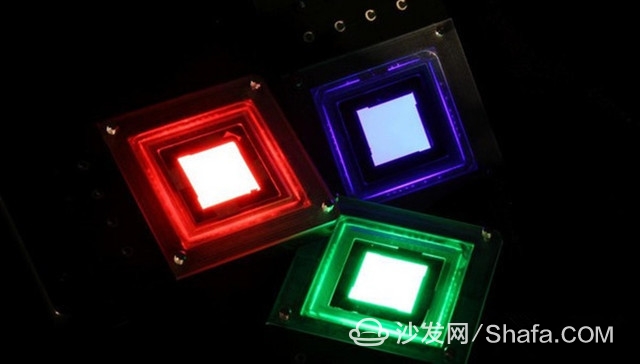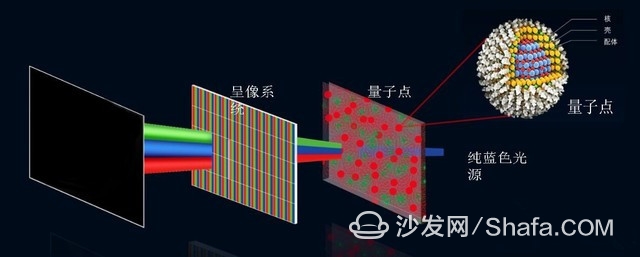In fact, QLED, which has been hailed by Samsung as the next generation display direction, is a new display technology that combines traditional LCD and OLED. It is expected that QLED TV products will be available after 2019.

"Electroluminescence" QLED display technology
We all know that quantum dots are semiconductor nanocrystals that emit colored light when stimulated by light or electricity. The color of the light is determined by the composition and size of the quantum dots. Therefore, by changing the shape of the quantum dots, high-pure pure-color light including red light to blue light can be obtained, and there is congenital absolute advantage in color. The two major application directions of quantum dots in display technology are often confused.
The first thing to say is Quantum Dots-Backlight Unit (QD-BLU), which is based on the "photoluminescence" of quantum dots. It is a solution currently adopted by Quantum Dot TV in the market to solve common LCDs. The problem of TV backlighting is not bright enough. This color deviation is reflected in the screen image, and the user may feel that the picture is cold or warm and does not achieve the best visual experience. Using a blue LED to obtain high-purity white light through an optical material (quantum dot film) with red and green quantum dots, this problem has been well solved, and at the same time it has also been able to reproduce very brilliant colors, belonging to quantum dot technology. Application in the field of LCD compromise.

"Photoluminescent" Quantum Dot TV Lighting Principle
The QLED currently being developed by Samsung is referring to the second class of quantum dots. It is a Quantum Dots Light Emitting Diode Display (QLED) based on "electroluminescence" characteristics, which is a more advanced application of quantum dots in display technology. It is no longer that blue light produces a white light through a layer of quantum dot material to illuminate the LCD screen, but instead it is electrically driven so that the quantum dot itself emits light and produces images by color mixing, eliminating the need for liquid crystal, quantum dot film, and the backlight unit. . This also makes the QLED and OLED have similar principles in the display mode, and the structure is also very simple.
However, at present, QLED is still in the stage of technological research and development, and it has some difficult problems to overcome itself, and it is expected that products will be available three years later. During this period, whether OLED technology will leapfrog development to overcome its own defects, QLED technology will encounter bottlenecks in the development and fetal death, it is still very difficult to predict. However, as consumers gradually return to the nature of television and pursue image quality, whoever is next-generation display technology may not be so important. It is the core of competition to provide the best display in a cost-effective manner.